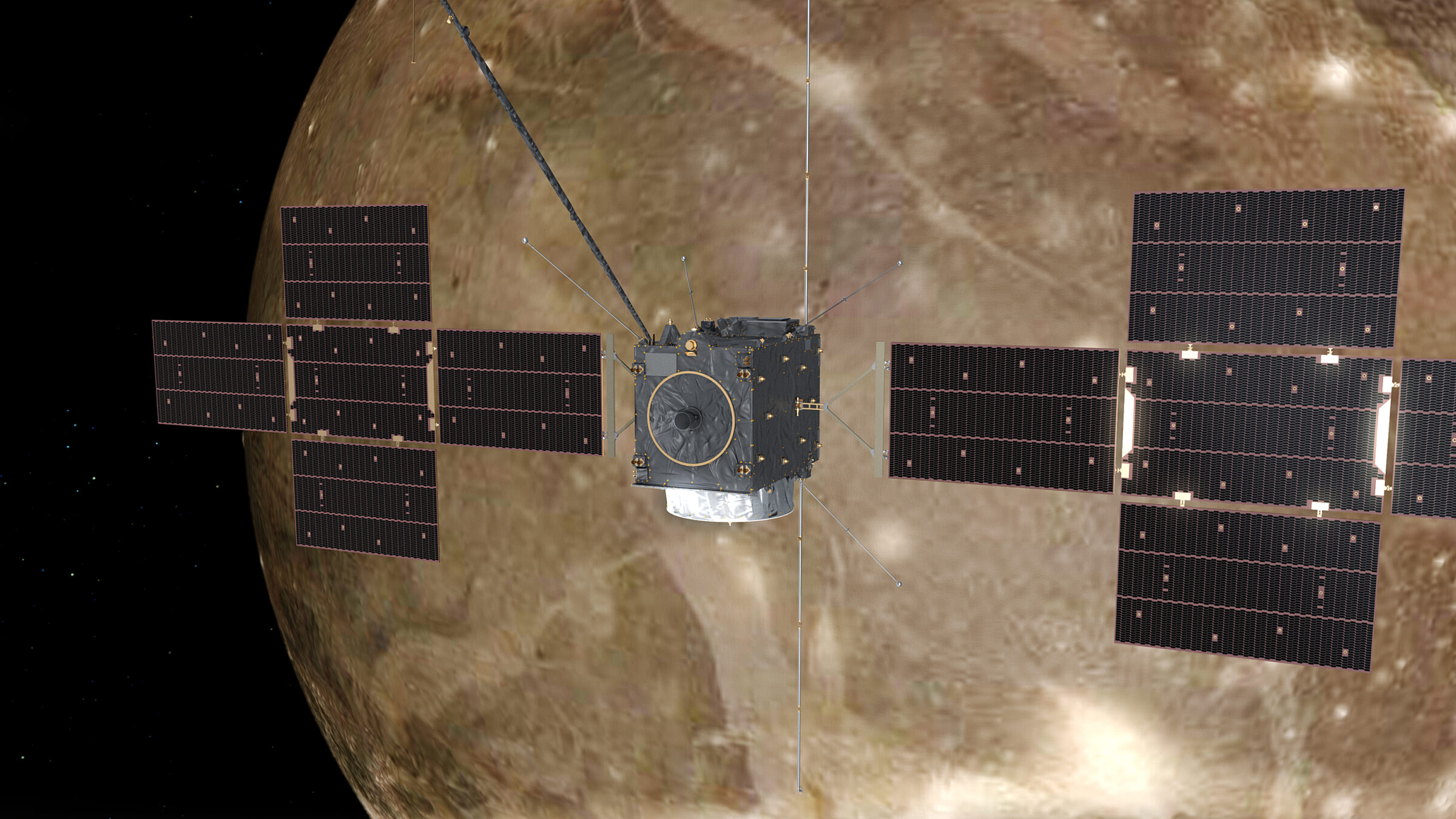Jason Davis • Apr 14, 2023
Juice launches on mission to explore Jupiter's icy moons
A new era of icy moons exploration is underway following the successful launch of Juice, the Jupiter Icy Moons Explorer. The European Space Agency-led mission blasted off from Kourou, French Guiana atop an Ariane 5 rocket on Friday, April 14 at 8:14 a.m. EDT (12:14 UTC).
Juice will explore Jupiter’s moons Europa, Ganymede, and Callisto, all three of which may harbor subsurface oceans. The mission will investigate whether conditions on these moons may be suitable for past or present life. The results will teach us what to expect on similar icy worlds orbiting distant exoplanets.

"Today the Juice mission embarks on its journey to explore Jupiter's icy moons,” said Bill Nye, CEO of The Planetary Society. “ESA's engineers and scientists will bring us discoveries at Ganymede, Europa, and Callisto, igniting the curiosity of people on Earth. Juice will unlock the secrets of these distant worlds — potentially revealing subsurface oceans and expanding our understanding of habitable environments beyond Earth.”
Juice successfully separated from its Ariane 5 rocket about half an hour after liftoff. Roughly an hour and twenty minutes into flight, the spacecraft deployed its dual solar arrays, which have a combined collecting area of 85 square meters (915 square feet). The solar panels will be critical for providing power at Jupiter, where sunlight is 25 times weaker than at Earth.
The spacecraft will unpack more key equipment during the next two-and-a-half weeks, including antennas, probes, and magnetometer booms.

Juice now begins an arduous eight-year journey to Jupiter, during which it will use the gravity of multiple worlds to tweak its orbit. The spacecraft will perform the first-ever Earth-Moon dual flyby in August 2024, followed by a Venus flyby and then two more Earth flybys before reaching Jupiter in 2031.
In orbit around the gas giant, Juice will perform a combined 35 flybys of Europa, Ganymede, and Callisto, studying the worlds with 10 powerful science instruments, a radiation monitor, and a radio experiment. At Europa, Juice will look for elements essential to life as we know it near cracks where the moon’s subsurface ocean may be seeping onto the surface. Farther out at Callisto, Juice will use radar and gravity field data to narrow down some basic facts about the moon’s possible subsurface ocean.
The spacecraft will slip into orbit around Ganymede in December 2034, marking the first time a spacecraft has orbited a moon other than our own. There, it will scan Ganymede’s surface for biosignatures and study how deep the moon’s ocean lies. Ganymede is the only known moon with a magnetic field, which creates auroras visible to the Hubble Space Telescope. Juice will study how this field operates within Jupiter’s larger magnetic field.
The mission will end in 2035 when the spacecraft is intentionally crashed into Ganymede. For more, read our full mission preview here.
Support our core enterprises
Your support powers our mission to explore worlds, find life, and defend Earth. You make all the difference when you make a gift. Give today!
Donate

 Explore Worlds
Explore Worlds Find Life
Find Life Defend Earth
Defend Earth

